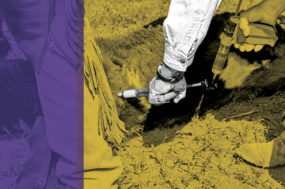If the follow-through from the Memorial Day holiday is good, the boxed beef cutout may be set to hold at stronger levels through the summer.
From the current highs, Choice boxed beef could hold near the $200 per cwt. for seasonal summer lows before moving higher again into the fourth quarter.
The May Cattle on Feed report showed a second month of strong feedlot placements. However, both March and April were compared to relatively small placements last year and April had one more business day this year so the increases are not as much as it appears.
Combined March and April placements were up 336,000 head from last year, though placements for year to date are up only 133,000 head. That raises an important point to keep the recent placement numbers in perspective.
Much of the increase in March and April placements were heavy weight feeders that will be matched with earlier lightweight placements when they are marketed in August and September.
Those earlier lightweight placements were down significantly year over year which means the recent surge in placements is more of a moderation of coming feedlot marketings than a significant increase.
Feedlot inventories are down less than two months ago but they are still down. The increase in placements this spring was due to several factors. It appears that a good share of the March placements were drought related movement of feeders, especially in the southern plains.
The April placements were concentrated in Nebraska and Iowa and likely were backgrounded feeders utilizing the large quantities of corn silage made from drought damaged corn last summer.
The movement of these cattle in April was likely somewhat sooner than expected as the long winter exhausted feed supplies in many areas.
The net increase in feedlot placements so far this year is interesting, especially considering that the net imports of feeder cattle from Mexico and Canada is down by 192,000 head and raises the question of what was the source of the cattle.
I suspect than some of the increased placements was early movement of backgrounded animals, which means they will not be available later.
Although there is no data to confirm it, I also suspect that some of the increase was replacement heifers that have already been diverted back into the feeder market.
While these heifers will not be back as replacements, there may be increased demand for replacements later in the year if conditions improve. Mexican cattle imports are likely to remain diminished for the rest of the year and are likely to total a half million head less this year compared to 2012.
The point is that feeder supplies are still tight and more feedlot placements now likely means less later. ![]()
—Derrell S. Peel is a livestock marketing specialist for Oklahoma State University. This report appeared in the Cow/Calf Corner newsletter from the Oklahoma Cooperative Extension Service.






